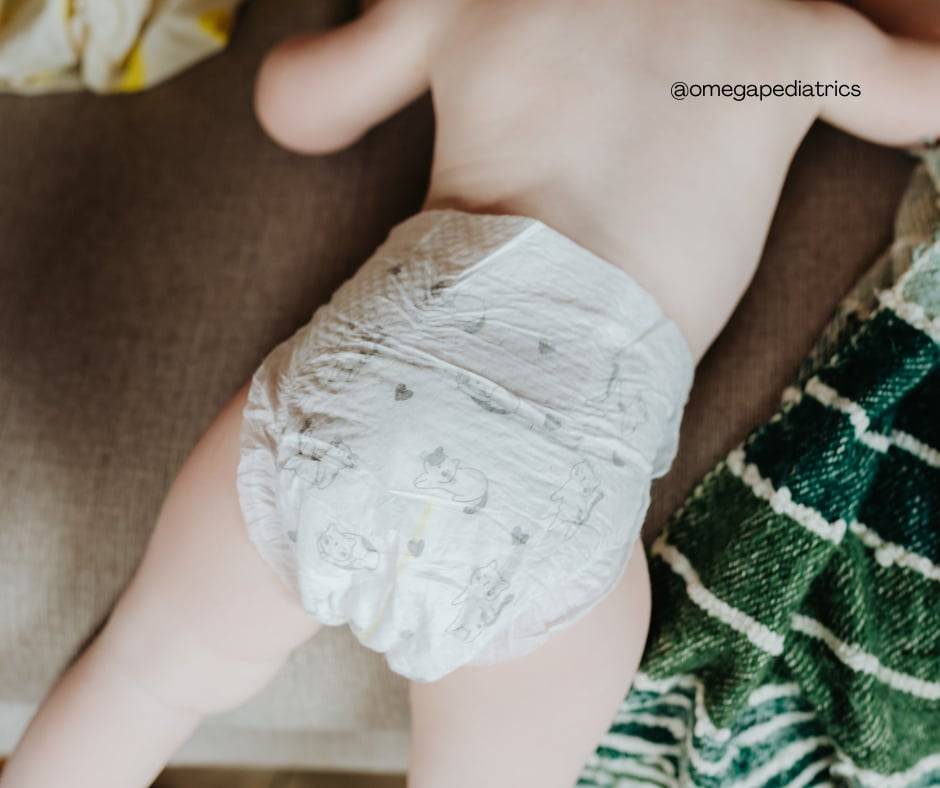Welcoming a newborn into your life is one of the most exhilarating and rewarding experiences, yet it can also feel overwhelming. As you begin this incredible journey, establishing a strong emotional connection with your baby is crucial.
Newborn baby bonding enhances their sense of security and trust and lays the groundwork for their emotional and cognitive development. In this blog post, we’ll explore good newborn baby bonding activities that are easy to incorporate into your daily routine and profoundly impact your baby’s growth.
Why Newborn Baby Bonding is Important
The bond between a parent and their newborn lays the foundation of the baby’s development. This early relationship, made by close, loving interaction, forms the basis of your baby’s safety and security. But why exactly is newborn baby bonding so vital?
- Emotional Security: When a baby feels securely attached to their caregiver, it fosters a sense of emotional stability. This security is crucial to help them navigate the world with confidence and resilience.
- Cognitive Development: The newborn’s brain is rapidly developing, and their interactions with their caregivers play a significant role. Bonding activities stimulate their senses, supporting cognitive development.
- Healthy Social Skills: The early bond you establish with your baby influences how they’ll interact with others in the future. A strong bond fosters empathy, cooperation, and healthy social relationships.
1. Skin-to-Skin Contact: The First Step in Bonding
The simplest and most effective bonding activity involves placing your baby on your bare chest, ensuring their skin touches yours. This close physical contact is comforting for your baby and essential for their physiological regulation, such as maintaining body temperature and stabilizing heart rate.
How Skin-to-Skin Contact Benefits Your Baby
- Promotes Emotional Connection: The warmth and closeness of skin-to-skin contact help them feel secure and loved, fostering a deep emotional connection.
- Supports Physical Health: Studies have shown that skin-to-skin contact regulates body temperature, heart rate, and breathing patterns, contributing to overall physical well-being.
- Encourages Breastfeeding: For breastfeeding mothers, skin-to-skin contact stimulates milk production and facilitates a successful breastfeeding experience.
Practical Tips for Skin-to-Skin Contact
- Right After Birth: Initiate skin-to-skin contact as soon as possible after your baby is born. This is the “golden hour,” a critical time for bonding.
- During Feeding: Whether breastfeeding or bottle-feeding, holding your baby close to your skin enhances the feeding experience and strengthens the bond.
If you wish to learn more about the golden hour, this article is for you: Mastering the Golden Hour: Essential Tips for New Parents in Neonatal Care
2. Talking and Singing to Your Baby: Building Bonds Through Sound
Your voice is one of the most familiar and comforting sounds to your newborn, even from birth. Talking and singing to your baby might seem like a small gesture, but it impacts their emotional and cognitive development. Babies are highly responsive to the sound of their parents’ voices, helping them feel connected and secure.
The Role of Talking and Singing in Bonding
- Language Development: Regularly talking to your baby lays the foundation for their language skills. Even though they can’t understand words yet, they absorb the rhythm, tone, and speech patterns.
- Emotional Comfort: The soothing nature of your voice provides comfort to your baby, reducing stress and promoting a sense of well-being.
- Strengthening the Parent-Child Bond: Engaging your baby in conversation, no matter how one-sided, reinforces the bond between you and your baby, making them feel cherished and loved.
Ideas for Talking and Singing to Your Baby
- Narrate Your Day: Share your day baby by narrating your activities. For example, say, “Now we’re going to change your diaper,” or “Let’s go outside for a walk.”
- Sing Lullabies and Rhymes: Lullabies are timeless to calm and comfort your baby. The gentle melody and rhythm are soothing to doze them to sleep or calm them when they’re fussy.
3. Babywearing: Keeping Your Baby Close
A practice across different cultures, keeping your baby close while going about your daily activities. A wrap, sling, or carrier, holds your baby securely against your body, giving them the comfort of your presence and the sensation of your movements.
Benefits of Babywearing for Bonding
- Continuous Contact: Babywearing allows for ongoing physical contact, which comforts your baby and strengthens your bond.
- Enhanced Development: The gentle movement while being carried aids in their physical development and sensory stimulation.
- Convenience for Parents: Babywearing keeps your hands free, making it easier to care for your baby while attending to other tasks, fostering a strong connection without sacrificing practicality.
Safe Babywearing Practices
- Choosing the Right Carrier: Choose appropriate for your baby’s age and size, providing adequate support for their head, neck, and spine.
- Proper Positioning: Always position your baby, their face is visible and their airway is clear. The “M” position, where the baby’s knees are higher than their bottom, is recommended for proper hip development.
Know more about babywearing in this article: The Magic of Babywearing: Benefits and Techniques for New Moms
4. Eye Contact and Facial Expressions: Connecting Through Sight
Eye contact is a powerful way to bond with your newborn. Babies are naturally drawn to faces, and making eye contact helps them feel seen and understood. This visual connection is one of the earliest forms of communication and plays a crucial role in emotional bonding.
How Eye Contact Fosters Bonding
- Building Trust: When you make eye contact with your baby, you teach them they trust you. This trust is the foundation of a secure attachment, essential for healthy emotional development.
- Encouraging Social Interaction: Eye contact helps your baby learn about social cues and facial expressions. Over time, this aids in their understanding of emotions and relationships.
- Enhancing Emotional Connection: The shared gaze between you and your baby deepens emotional connection, making them feel loved and cared for.
Ways to Use Eye Contact to Bond
- During Feeding: Whether breastfeeding or bottle-feeding, maintain eye contact. This makes your baby feel connected to you and makes feeding a more intimate and bonding experience.
- Interactive Play: Play simple games that involve eye contact, like “peek-a-boo.” These interactions are fun and build their social skills.
- Facial Expressions: Exaggerate your facial expressions when interacting with your baby. Babies love studying faces, and expressive gestures captivate their attention and help them learn about emotions.
5. Bath Time: A Relaxing Bonding Opportunity
Bathing is more than just a necessary daily activity; it’s also a special time for bonding. The warm water, gentle touch, and calm atmosphere create a perfect environment for connection. Establishing a soothing bathtime routine helps them relax and prepare for a good night’s sleep.
Making the Most of Bath Time
- Create a Calm Environment: Choose a time of day when you and your baby feel relaxed. Use warm water, and soft lighting, and keep the room quiet to create a soothing atmosphere.
- Talk and Sing During Bath Time: Continue talking or singing to your baby during the bath. The sound of your voice will help them feel secure and content.
- Gentle Touch: Use gentle, loving strokes during bathing. The touch isn’t only cleansing but also comforting, helping to reinforce your bond.
6. Massage: Bonding Through Gentle Touch
A centuries-old practice, this provides numerous benefits for the baby and parent. Not only does it promote relaxation and better sleep for your baby, but it also serves as a powerful bonding activity. Through massage, you connect with your baby on a deeper level, providing comfort and security through your touch.
Benefits of Infant Massage
- Promotes Relaxation: Regular massage calms your baby, reduces fussiness, and promotes better sleep.
- Relieves Discomfort: Gentle massage alleviates common discomforts like gas or colic, helping them feel more at ease.
- Enhances Parent-Child Bond: The close physical interaction during massage strengthens emotional connection, fostering a deeper sense of trust and security.
7. Playtime: Engaging Your Baby’s Senses
This is an essential part of your baby’s development and a wonderful way to bond. Even though your newborn is tiny, they’re already absorbing information from their environment and learning from every interaction. Simple playtime activities stimulate their senses, helping them develop and strengthen bonding.
Fun and Simple Playtime Activities
- Tummy Time: Tummy time is crucial for your baby’s physical development, strengthening their neck, shoulder, and arm muscles. It’s also a great opportunity for bonding. Lie down on the floor with your baby during tummy time, making eye contact and talking to them to keep them engaged.
- Peek-a-Boo: This classic game never fails to delight babies. The surprise element of peek-a-boo entertains and helps them understand object permanence—that objects continue to exist even when out of sight.
The Role of Play in Bonding
- Stimulating Cognitive Development: Playtime activities stimulate your baby’s brain, promoting cognitive development. Simple interactions like showing them a colorful toy or playing a gentle game of pat-a-cake engage their senses and encourage learning.
- Building Trust and Security: By engaging in playtime, you’re teaching them to rely on you for fun and comfort. This builds trust, which is crucial for their emotional development.
- Encouraging Social Interaction: Playtime introduces your baby to the basics of social interaction. They learn to respond to your expressions, gestures, and voice, laying the foundation for future social skills.
8. Breastfeeding and Bottle Feeding: Nourishment and Bonding Combined
Feeding time is one of the most intimate bonding experiences. Whether you choose to breastfeed or bottle-feed, these moments provide nourishment and an opportunity for close physical contact, where your baby feels your warmth, hears your heartbeat, and senses your love.
Enhancing the Feeding Experience
- Skin-to-Skin Contact: Whenever possible, incorporate skin-to-skin contact during feeding. This closeness promotes a stronger bond and has been shown to benefit breastfeeding success and the baby’s overall well-being.
- Maintain Eye Contact: As you feed your baby, look into their eyes. This simple connection reinforces your bond, making them feel safe and loved.
- Responsive Feeding: Pay attention to your baby’s cues. Responding to their needs promptly and with care strengthens your bond and helps your baby feel secure.
9. Bedtime Routines: A Daily Opportunity for Bonding
Establishing a bedtime routine is beneficial for your baby’s sleep patterns and provides a daily opportunity for bonding. A consistent routine helps your baby recognize that it’s time to wind down and prepares them for a restful night’s sleep. Moreover, the quiet and peaceful nature makes it an ideal time to connect with your baby.
Creating a Soothing Bedtime Routine
- Start with a Bath: A warm bath is a calming start to the bedtime routine. The warm water is soothing and signals that it’s time to relax and prepare for sleep.
- Include Gentle Massage: After the bath, a gentle massage is further relaxing, calming your baby conducive to sleep.
- Stick to a Consistent Routine: Babies thrive on routine. Keep bedtime activities consistent each night to let them know what to expect, making it easier for them to settle down and sleep.
10. Involving Siblings in Bonding Activities
If you have older children, include them in bonding activities with the new baby to foster a strong sibling relationship and make them feel included in the family dynamic. This involvement helps older siblings adjust to the addition to the family and reduces feelings of jealousy or rivalry.
Ideas for Sibling Involvement
- Singing Together: Encourage your older child to sing lullabies or nursery rhymes to the baby. This shared activity helps build a connection between siblings and gives your older child responsibility and pride.
- Helping with Bath Time: Let your older child assist with bath time. They help by holding the baby’s towel, washing their little feet, or being present. This involvement makes them feel important and connected to the baby.
Embrace the Power of Bonding with Your Newborn
Newborn baby bonding is dynamic–and evolves as your baby grows. From the first moments of skin-to-skin contact to daily feeding and playtime, every interaction helps to build a strong, loving relationship.
These bonding activities are more than just opportunities to spend time with your baby; they’re essential for their emotional, cognitive, and social development. By incorporating these activities into your daily routine, you’re providing your baby with the love and security they need and creating lifetime memories.
Every moment you spend bonding with your baby is an investment in their future well-being. Cherish bonding time with your baby!








